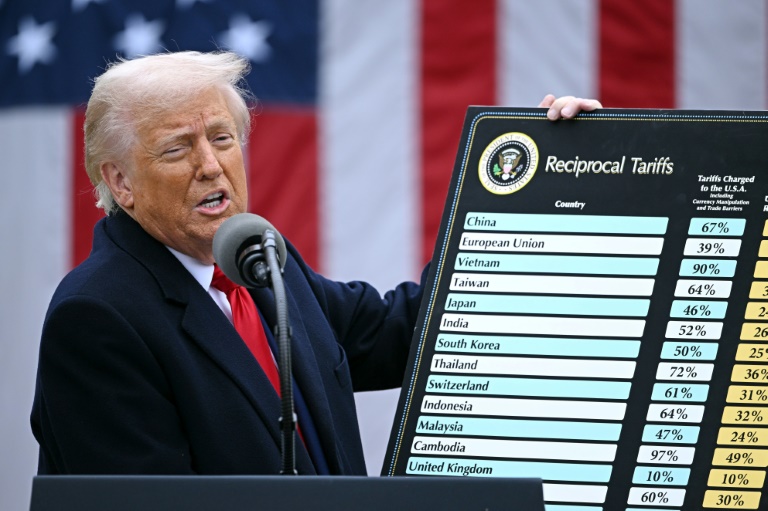Science
Trump Unveils AI Action Plan to Transform U.S. Cybersecurity Landscape

Former President Donald Trump has introduced a significant plan aimed at reshaping the artificial intelligence (AI) landscape in the United States. The initiative focuses on deregulation, directing the U.S. Department of Commerce to revise current AI risk management frameworks. This move could potentially dismantle established protections for companies seeking to engage with the federal government.
Insights from Joshua McKenty, an expert in deepfake and AI fraud, provide a deeper understanding of the implications of this plan. McKenty, a former Chief Cloud Architect at NASA and the Co-Founder and CEO of Polyguard, highlights the urgency of addressing the national security risks associated with AI misuse.
Assessing the Impact of Deregulation
McKenty emphasizes that while the plan aims to accelerate AI innovation, it may not sufficiently propel the United States forward in addressing existing threats. He points out the creation of an “AI Information Sharing and Analysis Center,” which will be overseen by the Department of Homeland Security. According to McKenty, the U.S. is lagging in its response to evolving AI-related cybersecurity threats, as evidenced by recent deepfake incidents involving political figures such as Marco Rubio and Rick Crawford.
“It’s encouraging to see the White House finally take AI threats seriously,” McKenty noted. “But urgency without coordination risks compounding the problem. The challenge ahead isn’t just establishing new programs; it’s ensuring they function effectively.”
Focus on Cybersecurity and Workforce Development
To enhance cybersecurity in the face of AI threats, McKenty stresses the importance of collaboration between government entities and the private sector. He advocates for building on existing cybersecurity guidance from organizations like the FBI, CISA, NSA, and the DOD Cybercrime Center. “What’s needed is clever coordination and actionable intelligence,” he stated.
Another critical aspect of the plan is workforce development. McKenty identifies a growing talent gap in the AI sector, with the demand for skilled professionals outpacing the supply of trained engineers, researchers, and cybersecurity experts. He advocates for long-term investments in STEM education, improved immigration pathways for top talent, and stronger partnerships between industry and academic institutions.
In terms of risk management, McKenty highlights the necessity of a robust policy framework. He recommends that revisions to the National Institute of Standards and Technology (NIST) framework should prioritize technical clarity, threat modeling, operational usability, and scientific rigor. “Stripping out key areas addressing misinformation or emergent behavior would render the framework less relevant at a time when the stakes are escalating,” he cautioned.
As the landscape of artificial intelligence continues to evolve, the ramifications of Trump’s action plan will likely shape the direction of U.S. cybersecurity policy and AI governance. The effectiveness of these initiatives will depend on a coordinated approach that balances innovation with robust safeguards to protect public discourse and digital trust.
-

 Science2 months ago
Science2 months agoToyoake City Proposes Daily Two-Hour Smartphone Use Limit
-

 Health2 months ago
Health2 months agoB.C. Review Reveals Urgent Need for Rare-Disease Drug Reforms
-

 Top Stories2 months ago
Top Stories2 months agoPedestrian Fatally Injured in Esquimalt Collision on August 14
-

 Technology2 months ago
Technology2 months agoDark Adventure Game “Bye Sweet Carole” Set for October Release
-

 World2 months ago
World2 months agoJimmy Lai’s Defense Challenges Charges Under National Security Law
-

 Technology2 months ago
Technology2 months agoKonami Revives Iconic Metal Gear Solid Delta Ahead of Release
-

 Technology2 months ago
Technology2 months agoSnapmaker U1 Color 3D Printer Redefines Speed and Sustainability
-

 Technology2 months ago
Technology2 months agoAION Folding Knife: Redefining EDC Design with Premium Materials
-

 Technology2 months ago
Technology2 months agoSolve Today’s Wordle Challenge: Hints and Answer for August 19
-

 Business2 months ago
Business2 months agoGordon Murray Automotive Unveils S1 LM and Le Mans GTR at Monterey
-

 Lifestyle2 months ago
Lifestyle2 months agoVictoria’s Pop-Up Shop Shines Light on B.C.’s Wolf Cull
-

 Technology2 months ago
Technology2 months agoApple Expands Self-Service Repair Program to Canada









